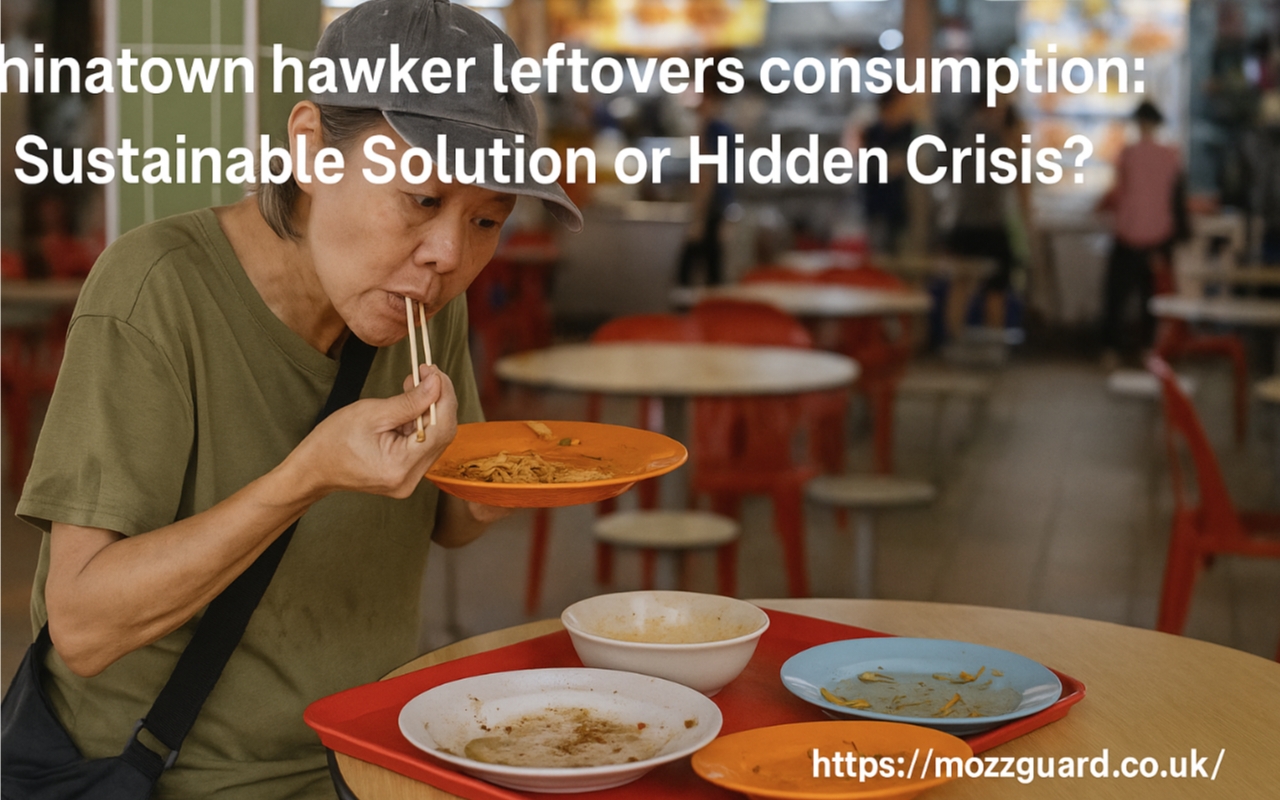Introduction: The Growing Attention on Food Waste
Food waste is one of the most pressing environmental and social challenges facing urban societies today. Every year, millions of tons of edible food are discarded, contributing not only to environmental degradation but also to social inequalities. In Singapore, a country known for its cleanliness and efficiency, food waste remains a significant issue. One unique facet of this broader problem can be observed in the bustling heart of the city: Chinatown hawker leftovers consumption has become a topic of increasing interest and concern. This practice, often shrouded in silence or stigma, raises critical questions about sustainability, food security, health, and ethics.
Understanding Chinatown’s Hawker Culture
Chinatown in Singapore is home to one of the country’s most vibrant and iconic hawker scenes. Hawker centers are open-air complexes that house a variety of food stalls selling affordable local dishes. These venues are cultural landmarks and serve thousands of people daily, from locals and tourists to migrant workers and the elderly. The sheer volume of food produced daily in these centers inevitably leads to a considerable amount of leftovers. Some of this leftover food finds its way to the trash, but not all of it. A less discussed yet real phenomenon is the collection and consumption of these leftovers by certain individuals, often out of necessity or habit.
Who Is Consuming Hawker Leftovers?
The Chinatown hawker leftovers consumption involves a diverse group of individuals. At one end of the spectrum are the homeless or financially disadvantaged individuals who rely on these leftovers as a means of sustenance. At the other end are older residents who, driven by thrift or a sense of environmental consciousness, collect uneaten food to avoid waste. In between these groups are food waste activists and community volunteers who repurpose leftovers into meals for the needy. While motivations vary, the practice is largely under the radar, often hidden due to shame, legal ambiguity, or societal judgment.
Motivations Behind Leftover Consumption
People Chinatown hawker leftovers consumption for multiple reasons. For some, it is a matter of survival. The rising cost of living in Singapore can leave marginalized groups with few options for regular meals. For others, it reflects a deeply ingrained habit of frugality—an ethos common among older generations who lived through periods of scarcity. There are also those motivated by environmental concerns; by reducing food waste, they see themselves contributing to a more sustainable society. In a few cases, individuals may even collect leftovers as part of research or social experiments aimed at raising awareness about waste and consumption.
Public Health and Safety Concerns
One of the most contentious aspects of hawker leftovers consumption is the risk it poses to public health. Leftover food, especially when not stored properly, can become a breeding ground for bacteria and pathogens. Consuming such food can lead to foodborne illnesses, posing a danger to already vulnerable populations. Furthermore, since this practice is unofficial and unregulated, there are no safety protocols or standards in place to ensure that the food being consumed is still safe. This creates a dilemma: while the practice reduces waste and feeds the hungry, it also introduces significant health risks.
Legal and Regulatory Framework
Singapore has strict regulations around food hygiene and public health. While there are no explicit laws against consuming food waste, food handling and distribution are tightly controlled. Hawkers are required to dispose of unsold food properly, and unauthorized collection is generally frowned upon, if not outright prohibited. This regulatory framework, while essential for maintaining public health standards, creates a grey area for those who consume or redistribute leftovers. Community groups interested in food rescue often need to navigate complex bureaucratic channels to operate legally and safely.
Social Perception and Stigma
Another significant barrier to open discussion and reform is the stigma associated with consuming leftovers. In a society that places high value on cleanliness, order, and prosperity, the act of eating discarded food can be seen as degrading or shameful. This social stigma affects not only those who consume the leftovers but also those who advocate for more sustainable food practices. As a result, many efforts to normalize or regulate leftover consumption face resistance from the public, despite the potential benefits.
Sustainable Alternatives and Innovations
Despite these challenges, several initiatives in Singapore and beyond are exploring ways to address food waste sustainably. Community fridges, food rescue programs, and mobile applications that connect consumers with surplus food from restaurants and hawkers are gaining traction. These platforms aim to redistribute edible food before it becomes waste, ensuring safety and dignity for recipients. In Chinatown, informal networks of volunteers sometimes collect unsold food with the tacit approval of hawkers, repackaging it for redistribution. While these efforts are commendable, they are not yet widespread or institutionalized.
Ethical Implications and Societal Responsibility
The ethical implications of Chinatown hawker leftovers consumption are complex. On one hand, allowing edible food to go to waste when people are going hungry is morally questionable. On the other hand, encouraging the consumption of potentially unsafe food is equally problematic. This ethical conundrum calls for a broader societal response. Policies that incentivize donation of unsold food, provide funding for food redistribution infrastructure, and educate the public on food safety and waste can help bridge this gap. Ultimately, addressing this issue requires collective responsibility—from government bodies and hawkers to consumers and community organizations.
The Way Forward: Balancing Risk and Reward
To move forward, Singapore needs a balanced approach that addresses both the risks and rewards of leftover consumption. This involves updating regulatory frameworks to facilitate safe food redistribution, reducing the stigma through public education, and supporting grassroots initiatives that tackle food insecurity. Chinatown, with its rich cultural tapestry and high foot traffic, can serve as a pilot location for such initiatives. By transforming how we view and manage food waste, we can turn a hidden crisis into a sustainable solution.
Conclusion: Rethinking Waste in a Food-Loving Nation
Chinatown hawker leftovers consumption is a microcosm of larger global issues related to food waste, poverty, and sustainability. While the practice raises serious concerns about health, legality, and social perception, it also offers valuable insights into how communities adapt and respond to scarcity. By bringing this hidden practice into the open and addressing it with empathy, innovation, and pragmatism, Singapore can lead the way in creating a food system that is both just and sustainable. The choice lies in whether we continue to treat leftovers as waste—or as a resource with untapped potential.
Read more: Prostadine Colibrim: Does It Really Improve Prostate Health?


